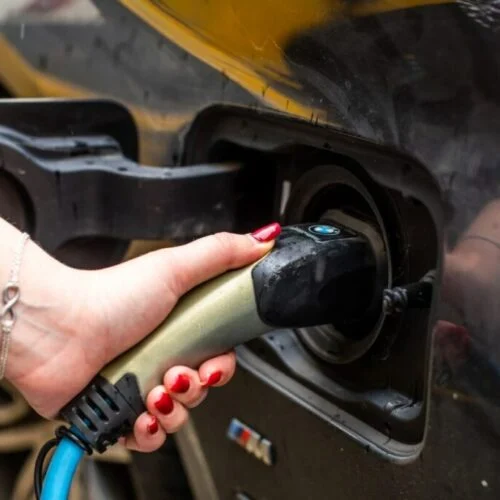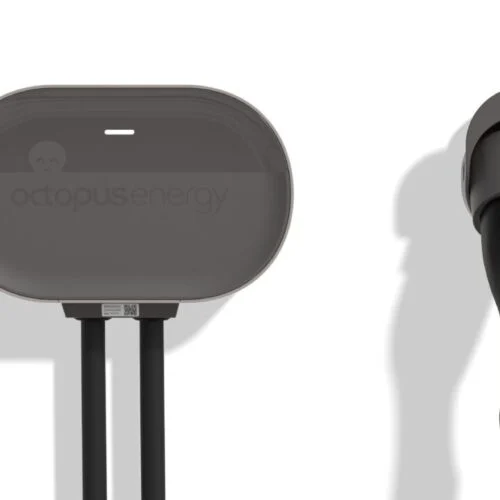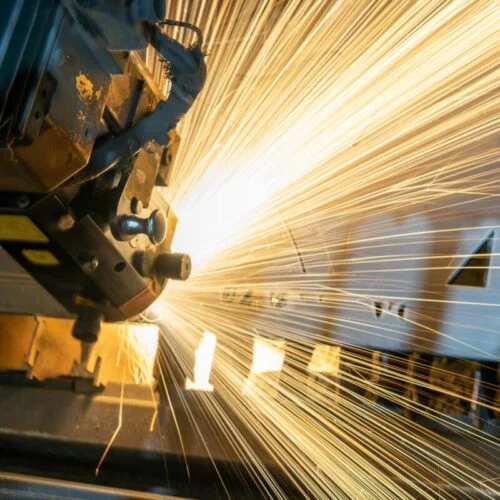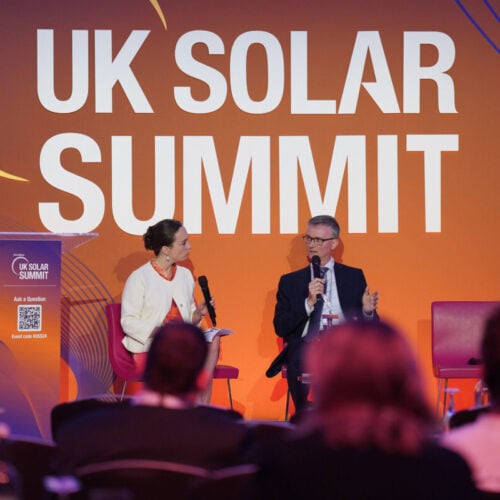The need to decarbonise heat in the UK is increasingly becoming a focus, as the country begins to turn its attention away from just energy and towards other high polluting sectors.
Currently, the vast majority of domestic heating is powered by fossil fuels but this will need to change in order to reach net zero. The key technologies being looked at for this are heat pumps and hydrogen, as well as heat batteries.
UK based start-up Caldera recently launched its large-scale domestic heat battery, offering an alternative green source of heating, which is particularly suited to off-grid properties and those running on oil.
“There are 1.2 million homes in the UK that use oil or LPG,” Caldera founder and CEO James Macnaghten told Current± recently. “In Europe the figure is 14 million. At present the UK government has not decided how to decarbonise homes that are on the gas grid. If the UK goes for all electric for heating or hydrogen, then we believe we can also compete in the current on-gas market. Our solution then applies to about 25% of UK homes (full detached with space for a unit externally).”
Switching presents a number of benefits, with oil being both more expensive and generating 40% more CO2 per kilowatt hour than the heat pump.
Caldera’s solution is centred around its patented Warmstone technology, which was an idea that came to Macnaghten in the middle of the night. “The next day I went into the factory and Guy [Winstanley, Caldera’s COO] and I tried to made a block of Warmstone in a bread tin,” he explained. “Three bread tins later it turned out that it did work. We started making bigger and bigger blocks and can now make them up to 1.3 tonnes in weight.”
Warmstone is designed to be heated to 500°C overnight using cheap, green, off-peak electricity, using a time-of-use-tariff, a smart meter and intelligent software to optimise charging. Getting up to this temperature is particularly important, as it is equivalent to a traditional boiler and can therefore provide a similar level of heating for a property utilising the original pipes and without the need for increased insulation and energy efficiency measures.
“I’ve had some really nice, interesting conversations with people where they go, ‘my radiator piping is small bore and it’s under the floor in concrete. I’d basically have to jackhammer the floor up [to fit a new system] and I can’t buy the same tiles because they’re now out of production’,” continued Macnaghten. “So to me, because we can do equivalent temperatures, it really helps them, but also because it’s equivalent power and temperatures, you can actually mix and match.”
The units are expected to be 90% efficient for a house that needs 16,000kWh of energy, with the team having worked throughout development to minimise heat loss from the system. It is designed therefore with high quality vacuum insulation, which allows it to hold energy over days or even weeks.
“The current unit if left unused takes 19 days to cool down from 500°C to 200°C,” said Macnaghten. “By way of comparison, traditional night storage heaters can lose as much as 40% of their energy in just 12 hours.”
Whilst there are a few heat batteries in the market, MacNaghten believes the combination of the efficiency of the modules, the cost at £12,000 including VAT when installed, the charging power at 20kW and the stored energy capacity at 100kWh makes it a leading solution for larger properties.
The price of a heat battery vs. a heat pump
The cost comparison to other technologies is key for technology, with the expense of decarbonising heat one of the major challenges. This stands for other low-carbon technologies such as hydrogen and heat pumps, with the Environmental Audit Committee last year warning that decarbonising heat could fail because of the high price of electricity making heat pumps uneconomic in comparison to existing gas boilers.
A further cost consideration for heat pumps is that they often require additional insulation or energy efficiency measures to be installed as they produce less heat.
“We estimate that where you need to retrofit a house before fitting a heat pump, the heat pump costs 50% more per annum to heat your home over 15 years,” MacNaghten. “Where you have new build properties or a more modern home with underfloor heating already fitted we would expect a heat pump to be the better option.”
Caldera commissioned Gemserv to put together independent research on the cost of its Warmstone technology in comparison with other low-carbon heat technologies. In it, it took the example of a large floor area of a 153m2 home that has a 25,236kWh annual heat demand and is currently being run on oil.
For such a property, Gemserv found that loft insulation, solid wall insulation, double-glazing and a PVC door would need to be fitted in order to make a heat pump viable, at a total cost including the pump of £27,690 to meet an energy demand of 16,068kWh a year.
In comparison, the installation of a heat pump would be £10,000 or £10,600 with loft insulation to meet a demand of 25,236kWh and 24,208kWh respectively. While it is cheaper to run the heat pump once the modification have been made – coming in at £889 as a fuel bill a year while the battery comes in at £1,493 – this dramatic difference in upfront cost brings the annualised cost of a Caldera heat battery to £2,297 without retrofit, and a heat pump without retrofit to £3,512 while with the retrofit it would be £3,569.
The economics for such a property could improve should carbon taxes be increased for oil, a situation thought likely by MacNaghten given the continued push to reach net zero by 2050. This would therefore bring the annual cost of a oil boiler with no retrofit from an estimated £2,129 a year to £2,583 a year, according to Gemserv, making heat batteries cost competitive from 2030 and beyond.
Next steps for Caldera
Caldera is set to install 12 Warmstone heat batteries over the next year to prove the technology, following news of its launch in May. However, the company had 150 pre-orders in just two weeks said MacNaghten.
“It’s always been the same conversation, which is they’re in our target market, they’re on oil, they’re in an old property, they want to do something to reduce their carbon footprint. And they haven’t wanted to do a heat pump because of the type of property they live in.”
While the UK is the best place to begin to rollout the technology, suggested MacNaghten given the smart meter rollout and the proliferation of renewables leading to an increasing number of negative wholesale energy price periods, the company will look to expand into Europe in the next five years as energy systems across the continent continue to transition.
Caldera has been crowdfunding on Crowdcube, hitting 100% of its target on the day it launched. The funding round is currently open to the public, but it is set to close on 10 June 2021.





